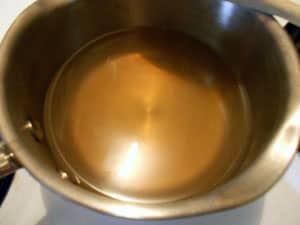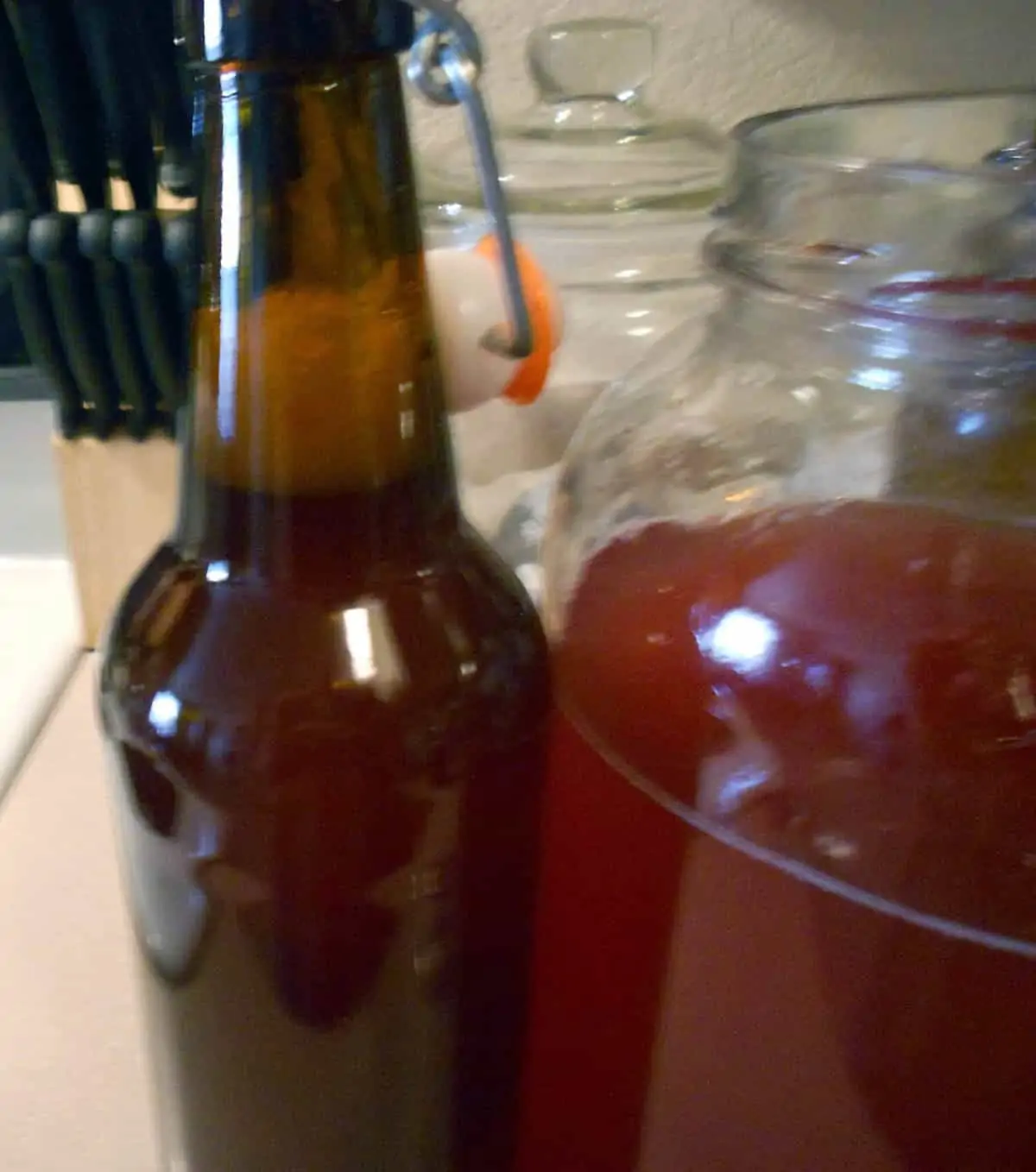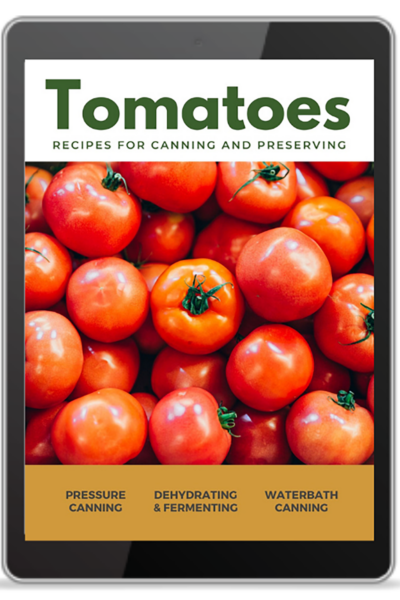
Ok, not really any toil or trouble, but definitely lots of bubbles.
I’m talking about water kefir (pronounced KEY-fur) today, which is an amazingly bubbly and thirst quenching brew you can make at home.
It’s a naturally carbonated beverage that’s full of probiotic goodness. You can leave it plain. Or you can flavor it with fruit or juice.
If you want your kefir to have a lot of carbonation you will need to invest in either bottles and a capper (available here), or flip-top grolish-style bottles (available here
).
Both of which are made to withstand the buildup of pressure from the carbonation.
If you don’t want to invest in bottles until you decide if you really like it or not, you can always use canning jars.
Just be sure that you leave the lid loose so that pressure doesn’t build up and make the jars explode. 🙂
To make water kefir you need water kefir grains. There are also milk kefir grains, but they are not interchangeable.
I’m not really sure why they are called “grains” because they have nothing to do with wheat-type grain.
Perhaps it’s because “grayish-white, rubbery, blobish things” doesn’t sound very appealing?
Regardless of the name water kefir grains are much like a SCOBY for brewing kombucha.
They are clusters if beneficial yeasts, bacteria, and enzymes that create a probiotic rich beverage that helps to replenish the good stuff in our digestive tracts.
Pin for later
Kefir grains can come either frozen and ready to use, or dehydrated. You can order those here.
If yours are dehydrated, follow the instructions that came with them to rehydrate before you make your first batch.
Water kefir grains will multiply in the right environment, so after you get the hang of it you can pass along your extras to a friend.
As with any other home ferment or culture, clean non-chlorinated water should be used. If you don’t want to buy bottled water, fill a gallon jar with tap water and let it sit uncovered for 24 hours. During that time the chlorine will dissipate.
Water kefir grains are happiest in a mineral rich environment. Some people add well-rinsed pastured egg shells to the jar during the brewing process.
I prefer to use mineral drops, mostly because I can’t seem to remember to not throw my shells into the compost bin. The brand I like is Concentrace and you can order that here.
I make my kefir in a gallon jar and that makes enough for about a week for me. My favorite time to drink it is in the afternoons when I used to reach for a sugary soda. It helped my kick my Dr. Pepper habit. And I love the bubbles!
A few notes before we get started
Water kefir is a fermented beverage. If you allow it to ferment too long it becomes an alcoholic beverage.
Normally, your kefir will have less alcohol that a piece of over-ripe fruit, but it’s best not to forget that you have some brewing.
The other note is that you need to keep your kefir at least 5 feet away from any other ferments or cultures, including your sourdough, to prevent cross-culturing.
Ok! So let’s learn how to make water kefir!
Here’s what you are going to need:
- Glass gallon jar with lid
- Plastic strainer
- Wooden or plastic spoon
- Kefir grains (about ¼ cup)
- Gallon of non-chlorinated water
- ¾ cup natural sweetener such as dehydrated sugar cane juice, Sucinat, or Rapidura
- Mineral drops or pastured egg shells
OK. I think we’re ready to get started now.

greyish-white, rubbery, blobish things aka water kefir grains
Put the sweetener in a small saucepan and just cover it with water.

sweetener just covered with water
Heat the water, stirring frequently, just until the sweetener is dissolved.

sugar dissolved in water
Then pour the plain water into your gallon jar until it’s about half full. Add the sweetened water and stir.
Now continue to fill the jar with plain water up to the shoulder. Make sure the water has cooled before you go to the next step.

sugar water in the jar
Add your mineral drops or egg shells and stir. Now add your kefir grains.

kefir grains in the sugar water
First Fermentation
You can either just toss them in the jar like I do, or you can put them in a muslin bag and toss that in.
If you use a bag, make sure that it is big enough to let the grains multiply. Now take a coffee filter or clean cloth and cover the top of the jar.

now with a lovely frilly cap
Use a rubber band (or hair scrunchy) or some twine to secure your covering. As the fermentation process commences, the grains will convert the sugar to gas and some alcohol.
The covering is to allow the gas to escape during the first fermentation as well as keep the bugs and dust and curious kitties out.
Now set the jar in a warmish place (75°F to 85°F is ideal) and let it brew for 24 to 48 hours. The warmer it is the faster it brews.
Taste it at 24 hours.
It should be much less sweet than when you started. Keep tasting it until the sweetness level is to your liking.
It shouldn’t take more than 48 hours, but occasionally when it’s really cold in my kitchen it has needed a little longer.
At this point, you can bottle it and let it sit for another 24 to 48 hours to build up carbonation, or you can flavor it in a second fermentation.
Second Fermentation
For the second fermentation you need to strain the kefir grains out and add juice or fruit.

and now with pomegranate juice added
I usually put a plastic strainer in the top of another gallon jar and just pour the kefir into the other jar.
Then I fill the jar to within an inch or so of the top with organic fruit juice. You can also use fresh or frozen fruit.
If you use fruit, you need to change it out every day.
Now put the lid on the jar. If it doesn’t seal well, put some plastic wrap over the top first before you put the lid on it.
Put it back in the warm place to brew some more. After 24 hours check for carbonation and taste.

bubbles!!
If it’s bubbly and tastes good to you, transfer it to your flip-top bottles.
I like to put about a tablespoon of juice in each bottle before I fill them with kefir.
Make sure that you leave about one to 2 inches of head room in each bottle.

leave room for more bubbles!
You can refrigerate right away or leave the bottles out for another day to get really bubbly. I leave them out because I loves me some bubbles!
And there you have it. A flavor customized, healthy, non-sugary, non-caffeinated, probiotic, alternative to soda. Serve it with meals or drink it alone.
What flavor would you like to try?





karen warren says
Sounds delicious! I’ve made milk kefir and love it, but I want to get some water kefir grains and try this!
Cery says
I love my water kefir, but I’ve not tried making my own milk kefir yet. Thanks for stopping by! 🙂
Cynthia says
DO oh then throw the used grains away? Or can you continue to use them?
Cery says
Hi Cynthia! That is a great question! After you remove the grains from the first ferment, you keep them. You can either start a new batch right away, or you can store the grains covered with sugar water in the refrigerator. As long as they are given new water every few months they will continue to work.
Blessings!
Jen says
Hi Cery! You said that it is a sugar-free beverage, but it looks like you used sugar dissolved in water to make it. How would it be sugar free with that much sugar added? And is there a way to make it with maple syrup or honey in lieu of white sugar?
Thanks!
Cery says
Hello Jen!
The kefir grains actually use the sugar for food. So the longer it ferments the less sugar is in the finished product. So depending on your preference you might end up with more sugar than someone else. I let mine ferment until there is just a hint of sweetness left.
In comparison to a Dr. Pepper which used to be my drink of choice, here’s the numbers.
1 gallon of water kefir starts with 3/4 cup of sugar. A 20 ounce Dr. Pepper has 1/3 cup of sugar.
6.4 20oz DPs make a gallon. So in 1 gallon of DP there are 2.112 cups of sugar.
And that’s before the fermenting process. After a double ferment, there will only be a trace amount of sugar remaining.
As to maple syrup or honey, I’m not sure. I haven’t tried either one of those. If you give it a try, please come back and let us know how it goes!
Hope that helps!
Cery